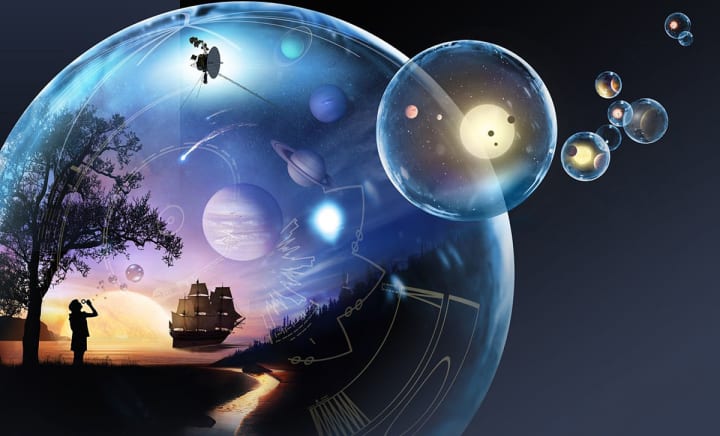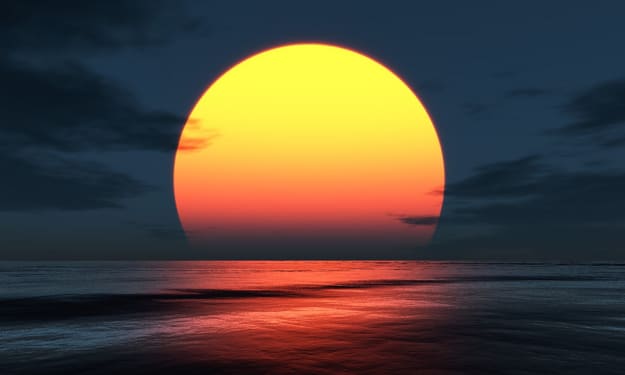Eternity
You don't have to belong to matter
A star blows a bubble and within it a kiss
Visible at the 10 o’clock position inside it
Already greater than 7 light-years across
It continues to expand
The shock wave washes over me
And I know
Belong or not
Alone or not
The cosmos cares
And thinks I’m special

. . .
When I went to my browser this morning, as usual, it had a banner with a series of unique and intriguing photos with a question about each intended to pique your interest so that you will click. There is usually at least one that captures my attention and today was no different. What caught my eye this morning was a beautiful, round, gloriously colored globe-like structure, which seemed to be in outer space. The question that accompanied it was, "What is steller wind?"
I can't say the question fascinated me, but the photo certainly did and I clicked to see what it was, hoping for something truly fascinating. I wasn't disappointed.
The stunning depiction of what I later learned was a space bubble, struck a chord somehow. The idea of this beautiful formation floating silently in the void of space, called up a mixture of positive and negative emotions, leading me to consider whether something must be recognized by others in order for it to be special or whether some things are inherently special. It's similar to the tree falling in a forest dilemma.
I came down on the side of there being inherent characteristics that make each of us unique whether or not others recognize them. When there are things that are meaningful to us, and we feel define our nature, they are real and no one can take them away by refusing to acknowledge them. We don't exist only in so much as others accept us, include us, or give us a place to belong. Our creation and existence is not a function of others; preferences, beliefs, and judgments.
Regarding the space bubbles, I learned that there are actually, enormous bubbles in space created when expanding hot gas (here is where stellar wind fits in) hits surrounding frigid gas creating a shock wave. The most well-recognized example of this is the bubble nebula. The expanding heated gas surrounds an immense star in the constellation Cassiopeia.
There are also giant bubbles that reach across space for tens of thousands of light-years above and below the Milky Way galaxy. Scientists aren't as clear on how these are formed.
NASA is presenting photos of the bubble nebula to celebrate the last day of World Space Week, which recognizes how science and technology enhance the human condition.
. . .
If you enjoyed reading this article, leave a comment, share this on your page, or consider leaving a tip. Thank you for reading and for your support!
About the Creator
Natalie Frank, Ph.D
Psychologist by training, writer by choice. Managing Editor (Serials, Novellas) LVP Press. Behavioral health & other topics; fiction & poetry. Other articles: Medium, Hubpages. My first volume of poetry, Disguised I Breath, In Love I Hold.






Comments
There are no comments for this story
Be the first to respond and start the conversation.